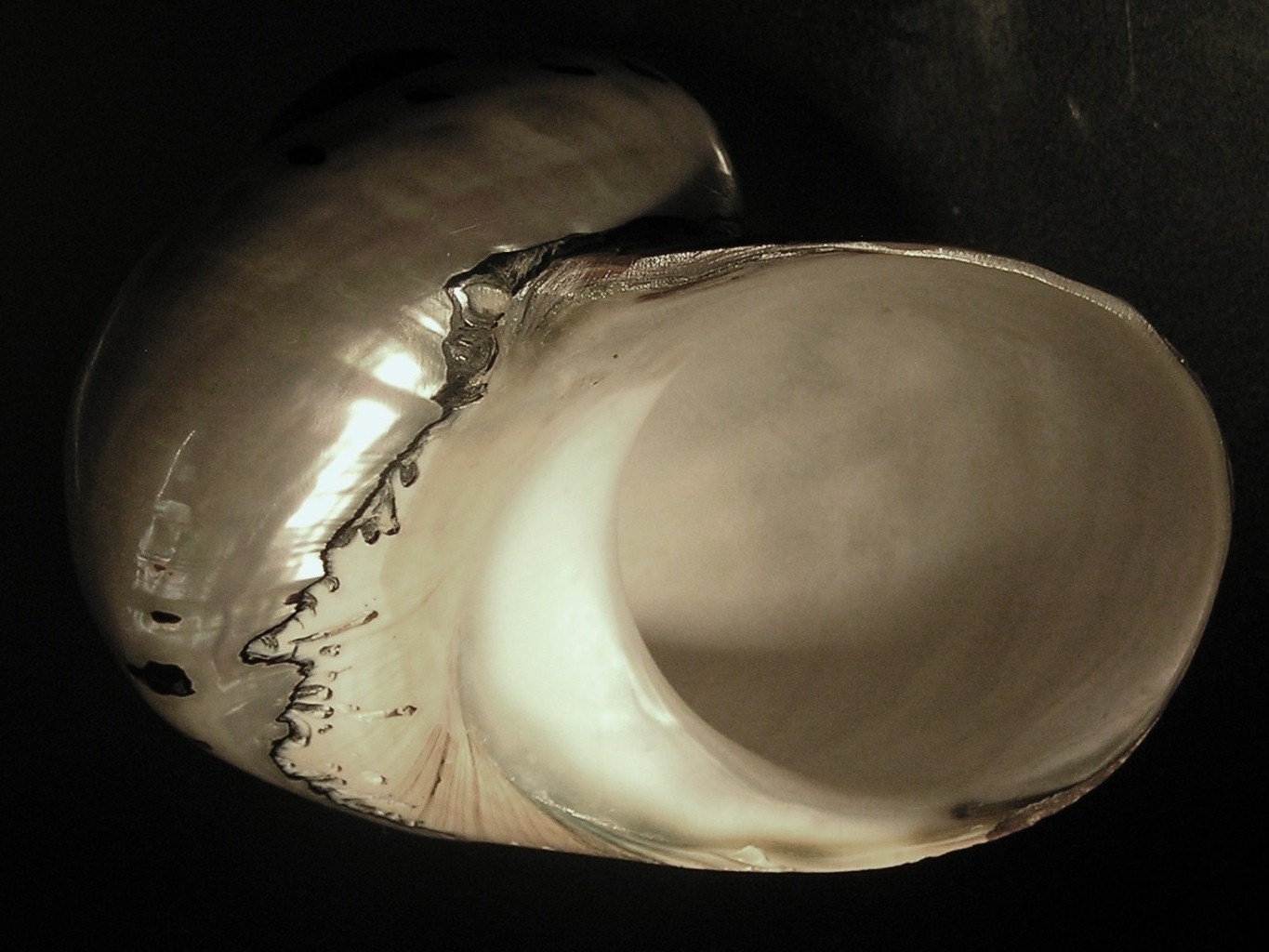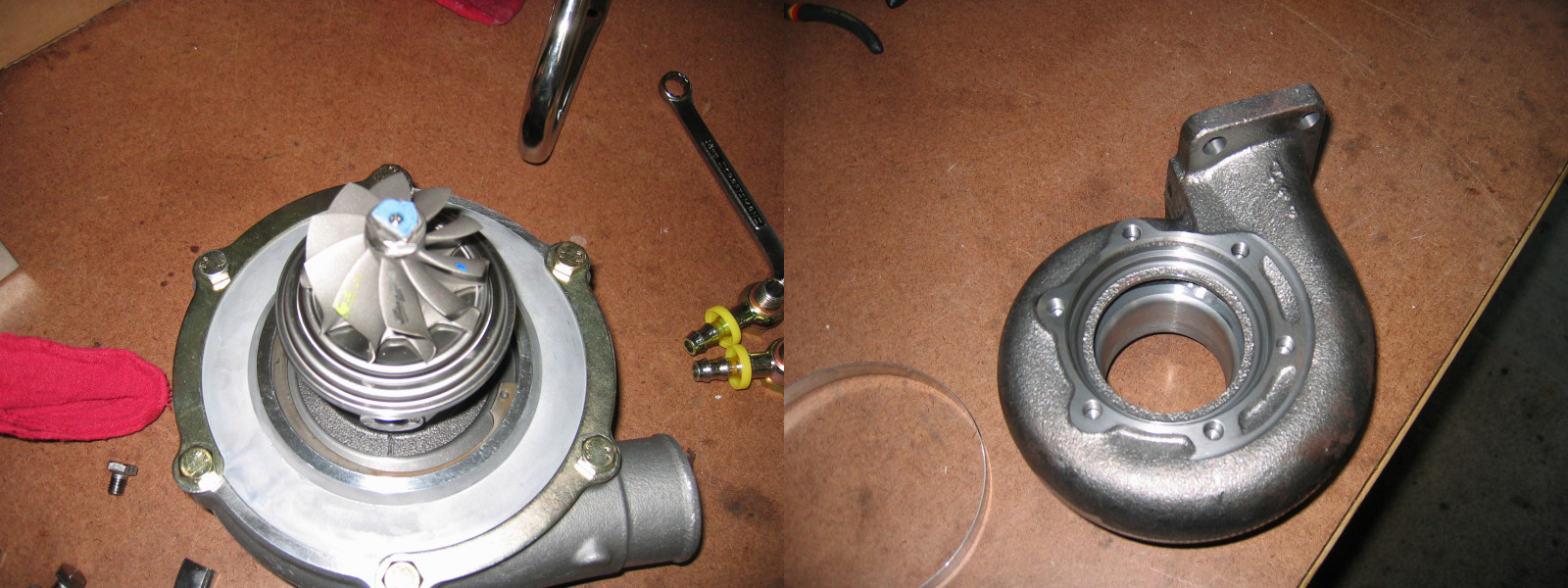|
Turbo Sarmaticus
''Turbo sarmaticus'', common names South African turban, giant turban, ollycrock, or alikreukel, is a species of sea snail, marine gastropod mollusk in the family Turbinidae. Some authors place this species in the subgenus ''Sarmaticus''. Description The length of the shell varies between 40 mm and 120 mm. The imperforate shell has a globose-depressed shape. Its color pattern is dull brownish, above flammulated, below more or less banded or maculate with white, usually showing more or less of the underlying orange-red layer, between which and the nacre there is a stratum of intense black. The very short spire is conic. The 5-6 whorls are convex but concave above. The upper ones contain revolving lirae. They are frequently carinated, the last traversed by several rows of nodules, of which the coronal is the more prominent and constant. The large, orbicular aperture is very oblique and beautifully nacreous within. The outer lip is thin, margined with intense black withi ... [...More Info...] [...Related Items...] OR: [Wikipedia] [Google] [Baidu] |
Carl Linnaeus
Carl Linnaeus (; 23 May 1707 – 10 January 1778), also known after his ennoblement in 1761 as Carl von Linné Blunt (2004), p. 171. (), was a Swedish botanist, zoologist, taxonomist, and physician who formalised binomial nomenclature, the modern system of naming organisms. He is known as the "father of modern taxonomy". Many of his writings were in Latin; his name is rendered in Latin as and, after his 1761 ennoblement, as . Linnaeus was born in Råshult, the countryside of Småland, in southern Sweden. He received most of his higher education at Uppsala University and began giving lectures in botany there in 1730. He lived abroad between 1735 and 1738, where he studied and also published the first edition of his ' in the Netherlands. He then returned to Sweden where he became professor of medicine and botany at Uppsala. In the 1740s, he was sent on several journeys through Sweden to find and classify plants and animals. In the 1750s and 1760s, he continued to collect an ... [...More Info...] [...Related Items...] OR: [Wikipedia] [Google] [Baidu] |
Lip (gastropod)
In the shell of gastropod mollusks (a snail shell), the lip is the free margin of the peristome (synonym: peritreme) or aperture (the opening) of the gastropod shell. In dextral (right-handed) shells (most snail shells are right-handed), the right side or outer side of the aperture is known as the outer lip (''labrum''). The left side of the aperture is known as the inner lip or columellar lip (''labium'') if there is a pronounced lip there. In those species where there is no pronounced lip, the part of the body whorl that adjoins the aperture is known as the parietal wall. The outer lip is usually thin and sharp in immature shells, and in some adults (e.g. the land snails ''Helicella'' and '' Bulimulus''). However, in some other land snails and in many marine species the outer lip is ''thickened'' (also called ''callused''), or ''reflected'' (turned outwards). In some other marine species it is curled inwards (''inflected''), as in the cowries such as ''Cypraea''. It can also be ... [...More Info...] [...Related Items...] OR: [Wikipedia] [Google] [Baidu] |
Turbo (gastropod)
''Turbo'' is a genus of large sea snails with gills and an operculum, marine gastropod molluscs in the family Turbinidae, the turban snails.Bouchet, P.; Rosenberg, G. (2012). Turbo Linnaeus, 1758. Accessed through: World Register of Marine Species at http://www.marinespecies.org/aphia.php?p=taxdetails&id=151576 on 2012-09-27 ''Turbo'' is the type genus of the family. Description The shells of species in this genus are more or less highly conspiral, thick, about 20–200 mm, first whorls bicarinate, last whorl large often with strong spiral sculpture, knobs or spines, base convex, with or without umbilicus. Species in this genus have a round aperture and a solid, dome-shaped calcareous operculum. This circular operculum commences as a multispiral disc, like that of a ''Trochus'', upon the outer side of which is deposited a thin calcareous layer by a lobe of the foot which projects partly over it. This arrangement produces an operculum which exhibits all the whorls beneat ... [...More Info...] [...Related Items...] OR: [Wikipedia] [Google] [Baidu] |
Endemic Fauna Of South Africa
Endemism is the state of a species being found in a single defined geographic location, such as an island, state, nation, country or other defined zone; organisms that are indigenous to a place are not endemic to it if they are also found elsewhere. For example, the Cape sugarbird is found exclusively in southwestern South Africa and is therefore said to be ''endemic'' to that particular part of the world. An endemic species can be also be referred to as an ''endemism'' or in scientific literature as an ''endemite''. For example '' Cytisus aeolicus'' is an endemite of the Italian flora. '' Adzharia renschi'' was once believed to be an endemite of the Caucasus, but it was later discovered to be a non-indigenous species from South America belonging to a different genus. The extreme opposite of an endemic species is one with a cosmopolitan distribution, having a global or widespread range. A rare alternative term for a species that is endemic is "precinctive", which applies to s ... [...More Info...] [...Related Items...] OR: [Wikipedia] [Google] [Baidu] |
Turbo Sarmaticus 003
In an internal combustion engine, a turbocharger (often called a turbo) is a forced induction device that is powered by the flow of exhaust gases. It uses this energy to compress the intake gas, forcing more air into the engine in order to produce more power for a given displacement. The current categorisation is that a turbocharger is powered by the kinetic energy of the exhaust gasses, whereas a is mechanically powered (usually by a belt from the engine's crankshaft). However, up until the mid-20th century, a turbocharger was called a "turbosupercharger" and was considered a type of supercharger. History Prior to the invention of the turbocharger, |
Turbo Sarmaticus 001
In an internal combustion engine, a turbocharger (often called a turbo) is a forced induction device that is powered by the flow of exhaust gases. It uses this energy to compress the intake gas, forcing more air into the engine in order to produce more power for a given displacement. The current categorisation is that a turbocharger is powered by the kinetic energy of the exhaust gasses, whereas a is mechanically powered (usually by a belt from the engine's crankshaft). However, up until the mid-20th century, a turbocharger was called a "turbosupercharger" and was considered a type of supercharger. History Prior to the invention of the turbocharger, |
Operculum (gastropod)
The operculum (; ) is a corneous or calcareous anatomical structure like a trapdoor that exists in many (but not all) groups of sea snails and freshwater snails, and also in a few groups of land snails; the structure is found in some marine and freshwater gastropods, and in a minority of terrestrial gastropods, including the families Helicinidae, Cyclophoridae, Aciculidae, Maizaniidae, Pomatiidae, etc. The operculum is attached to the upper surface of the foot and in its most complete state, it serves as a sort of "trapdoor" to close the aperture of the shell when the soft parts of the animal are retracted. The shape of the operculum varies greatly from one family of gastropods to another. It is fairly often circular, or more or less oval in shape. In species where the operculum fits snugly, its outline corresponds exactly to the shape of the aperture of the shell and it serves to seal the entrance of the shell. Many families have opercula that are reduced in size, and which a ... [...More Info...] [...Related Items...] OR: [Wikipedia] [Google] [Baidu] |
Parietal Wall
In the shell of gastropod mollusks (a snail shell), the lip is the free margin of the peristome (synonym: peritreme) or aperture (the opening) of the gastropod shell. In dextral (right-handed) shells (most snail shells are right-handed), the right side or outer side of the aperture is known as the outer lip (''labrum''). The left side of the aperture is known as the inner lip or columellar lip (''labium'') if there is a pronounced lip there. In those species where there is no pronounced lip, the part of the body whorl that adjoins the aperture is known as the parietal wall. The outer lip is usually thin and sharp in immature shells, and in some adults (e.g. the land snails ''Helicella'' and ''Bulimulus''). However, in some other land snails and in many marine species the outer lip is ''thickened'' (also called ''callused''), or ''reflected'' (turned outwards). In some other marine species it is curled inwards (''inflected''), as in the cowries such as ''Cypraea''. It can also be e ... [...More Info...] [...Related Items...] OR: [Wikipedia] [Google] [Baidu] |
Columella (gastropod)
The columella (meaning "little column") or (in older texts) pillar is a central anatomical feature of a coiled snail shell, a gastropod shell. The columella is often only clearly visible as a structure when the shell is broken, sliced in half vertically, or viewed as an X-ray image. The columella runs from the apex of the shell to the midpoint of the undersurface of the shell, or the tip of the siphonal canal in those shells which have a siphonal canal. If a snail shell is visualized as a cone of shelly material which is wrapped around a central axis, then the columella more or less coincides spatially with the central axis of the shell. In the case of shells that have an umbilicus, the columella is a hollow structure. The columella of some groups of gastropod shells can have a number of plications or folds (the columellar fold, plaits or plicae), which are usually visible when looking to the inner lip into the aperture of the shell. These folds can be wide or narrow, prominent ... [...More Info...] [...Related Items...] OR: [Wikipedia] [Google] [Baidu] |
Aperture (mollusc)
The aperture is an opening in certain kinds of mollusc shells: it is the main opening of the shell, where the head-foot part of the body of the animal emerges for locomotion, feeding, etc. The term ''aperture'' is used for the main opening in gastropod shells, scaphopod shells, and also for ''Nautilus'' and ammonite shells. The word is not used to describe bivalve shells, where a natural opening between the two shell valves in the closed position is usually called a ''gape''. Scaphopod shells are tubular, and thus they have two openings: a main anterior aperture and a smaller posterior aperture. As well as the aperture, some gastropod shells have additional openings in their shells for respiration; this is the case in some Fissurellidae (keyhole limpets) where the central smaller opening at the apex of the shell is called an orifice, and in the Haliotidae (abalones) where the row of respiratory openings in the shell are also called orifices. In gastropods In some prosobranch ... [...More Info...] [...Related Items...] OR: [Wikipedia] [Google] [Baidu] |
Species
In biology, a species is the basic unit of classification and a taxonomic rank of an organism, as well as a unit of biodiversity. A species is often defined as the largest group of organisms in which any two individuals of the appropriate sexes or mating types can produce fertile offspring, typically by sexual reproduction. Other ways of defining species include their karyotype, DNA sequence, morphology, behaviour or ecological niche. In addition, paleontologists use the concept of the chronospecies since fossil reproduction cannot be examined. The most recent rigorous estimate for the total number of species of eukaryotes is between 8 and 8.7 million. However, only about 14% of these had been described by 2011. All species (except viruses) are given a two-part name, a "binomial". The first part of a binomial is the genus to which the species belongs. The second part is called the specific name or the specific epithet (in botanical nomenclature, also sometimes i ... [...More Info...] [...Related Items...] OR: [Wikipedia] [Google] [Baidu] |




.jpg)


_torquata_002.jpg)


